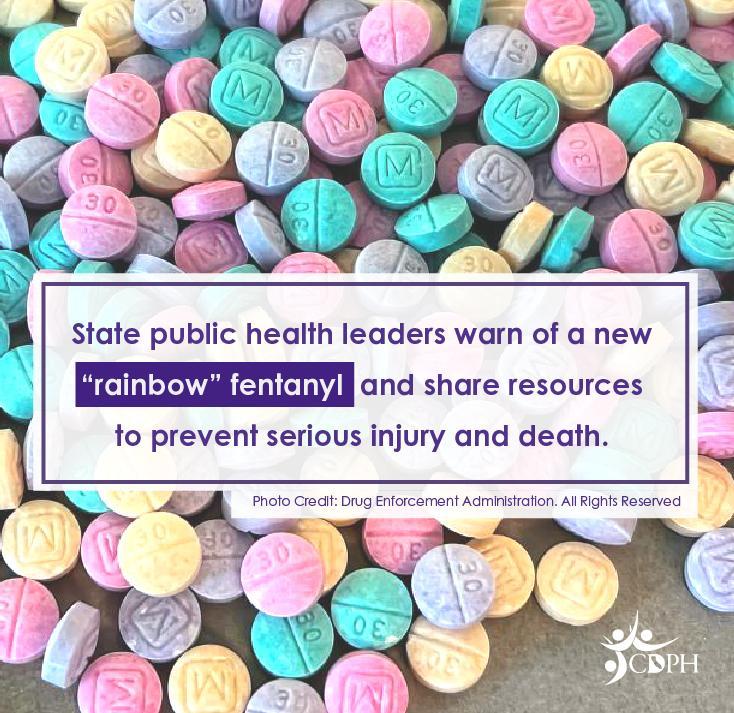Fentanyl Awareness
Webinar Recording Now Available: Fentanyl Crisis Among California Youth
Following the release of a California's alert on Rainbow Fentanyl, CDPH recently hosted a conversation about fentanyl among youth in California for health and education officials. State and local representatives offered perspectives on the fentanyl crisis and resources to address it - with a focus on school-based naloxone programs. View the webinar below:
State health officials cautioned school leaders this week about a new and concerning version of the synthetic opioid known as fentanyl.
version of the synthetic opioid known as fentanyl.
 version of the synthetic opioid known as fentanyl.
version of the synthetic opioid known as fentanyl.In a letter to superintendents and charter school administrators, California Department of Public Health Director Tomás J. Aragón sounded the alarm on “rainbow fentanyl,” a potentially fatal drug that comes in a variety of forms and bright colors. The U.S. Drug Enforcement Administration has similarly noted that rainbow fentanyl looks like candy, which could be a way to attract children and young people.
Recognizing the signs of opioid overdose can save a life. Here are some things to look for:
It may be hard to tell if a person is high or experiencing an overdose. If you aren’t sure, treat it like an overdose. Here’s what federal health officials advise:
- Small, constricted “pinpoint pupils”
- Falling asleep or losing consciousness
- Slow, weak, or no breathing
- Choking or gurgling sounds
- Limp body
- Cold and/or clammy skin
- Discolored skin (especially in lips and nails)
- Call 911 immediately. (Most states have laws that protect a person who is overdosing — or the person who called for help — from legal trouble.)
- Administer naloxone if available.
- Try to keep the person awake and breathing.
- Lay the person on their side to prevent choking.
- Stay with the person until emergency assistance arrives.